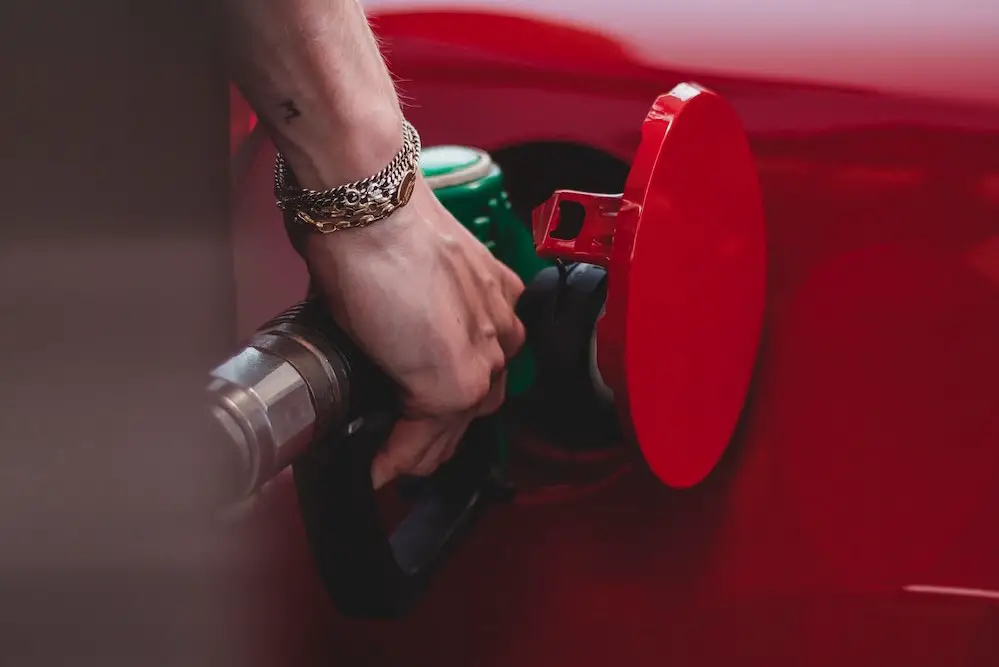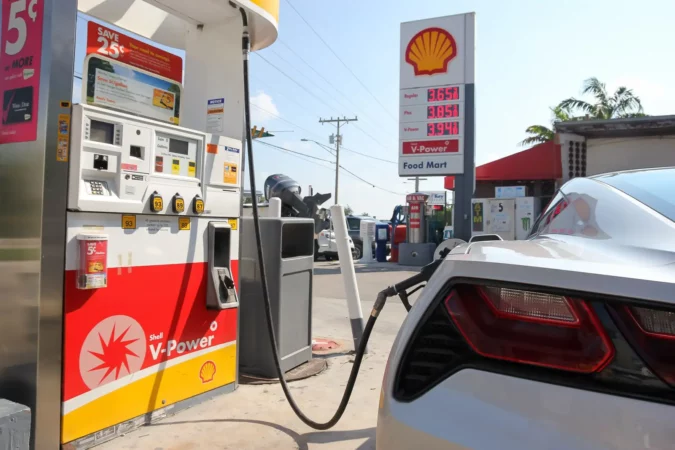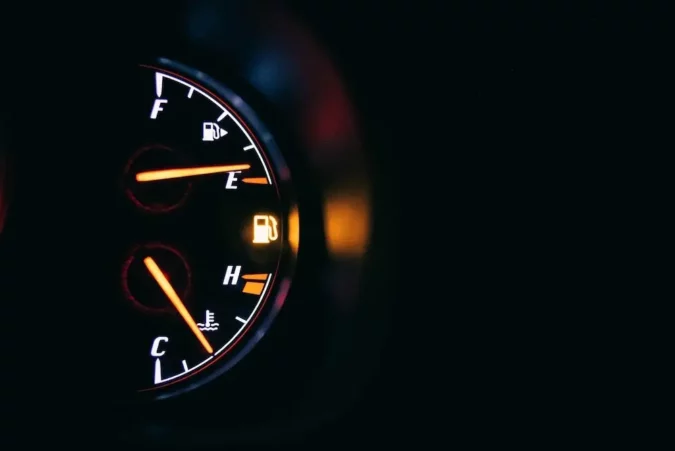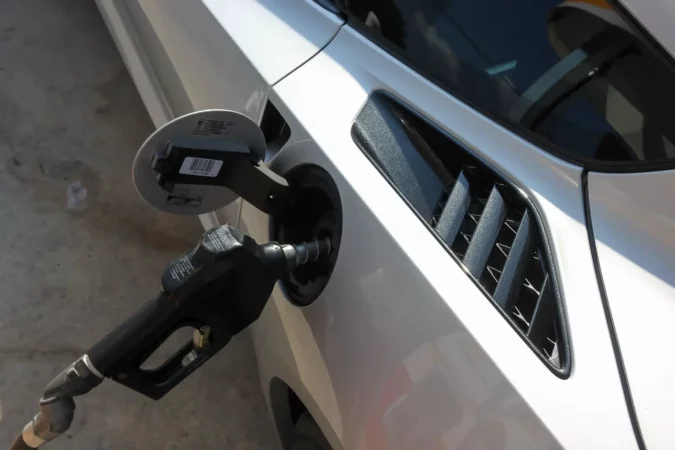Wondering when to opt for gas cap replacement? Most vehicles that travel the road include a gas cap, sometimes referred to as a fuel filler cap, which is a straightforward yet crucial part. Their straightforward function is to provide a solid seal and prevent dirt, debris, and dust from entering the gas tank.
The cap is essential to the functioning of the vehicle’s evaporative emissions system. Which is intended to collect and repurpose fuel vapors from the gas tank that would otherwise be released into the atmosphere.
Every time gasoline is supplied to the car, the cap is regularly removed, which causes it to wear out and need to be replaced eventually. The typical indications of a bad or malfunctioning gas cap can warn the driver of a potential problem.
- What is a Gas Cap?
- Facts about the Gas Cap
- What is the Check Engine Light?
- Can you Drive without it?
- What are its Symptoms?
- What to do with a Lost Cap Key?
- How to Choose the Best Gas Cap?
- What is a Universal Gas Cap?
- FAQs
- Final Verdicts
So, we’ll begin with a locking gas cap. What is it, then? A locking gas cap is a tool to guard against gasoline theft and unauthorized entry into a vehicle’s fuel tank. It can be quickly placed in the place of the stock gas cap that generally comes with vehicles as a replacement.
Locking Gas Cap
A locking gas cap’s primary job is to lock the fuel filler neck and keep people from accessing the fuel tank without the right key or code. A mechanical lock and key, a combination lock, or an electronic keyless entry system are used to achieve this.
A built-in alarm is another feature of some versions that activates if the cap is tampered with or removed without the right key or code. Locking gas caps are available for various vehicles, including cars, trucks, motorbikes, and boats.
They are available from various sellers, including specialty stores, online merchants, and auto parts dealers. Several versions are also offered for particular vehicle makes and models to guarantee a correct fit and proper operation.
Using a locking gas cap has a number of advantages. The increased security it offers is one of the main advantages. It is significantly more challenging for thieves to access the fuel tank and steal fuel when the fuel filler neck is locked. This can lessen the chance of vehicle damage and assist in discouraging gasoline theft.
A locking gas cap also limits unauthorized entry to the gasoline tank, which is another advantage. This may be crucial for fleet managers, who may need to monitor fuel consumption and prevent the unauthorized use of business vehicles.
To make it more difficult for vandals or other criminals to damage the car, many locking gas lids are also made to be tamper-resistant. Or, for malicious people to cause damage to your car by adding bleach in the gas tank, putting water in the gas tank, or pouring sugar in the gas tank.
Six Essential Gas Cap Facts
These are six crucial aspects of gas caps and buying gas that you should be aware of since it’s a regular element of owning a car. So, before we move on to the gas cap replacement, here’s what you need to know beforehand…
- Don’t tighten your gas cap too tightly. Stop immediately if you hear one click to avoid damaging the seal, and turn on your check engine light.
- Never purchase locking or aftermarket gas caps. Most of the time, they don’t seal properly, which could turn on your check engine light.
- You risk having your check engine light come on and having to bring your car into the service department to have it reset if you start your car before the gas cap has been fitted correctly.
- Never refuel your car. Stop pumping when the pump clicks off. When you top up, fuel may go back into the charcoal canister and turn on your engine light. If you regularly top off, you might have to pay several hundred dollars for repairs.
- Never put more than 10% ethanol in your gasoline (to make sure before filling up, always use an E10 checker).
- Use a fuel treatment approved by the manufacturer every third or fourth tank, or fill your tank with high-test gasoline. Fuel combustion results in the discharge of fumes, waste smoke, and carbon byproducts. Your car’s fuel injectors, pistons, valves, intake, and throttle body accumulate carbon deposits over time. This will be lessened, and your car’s breathing will be improved by either the fuel additive or high-test gasoline. Carbon buildup may have a negative effect on your engine’s overall wear and tear, fuel efficiency, and ability to start your car cold. Even though it will cost you a few dollars more each month, it can save you a lot of money over time.
Gas Cap Replacement
It depends on the car you drive and where you can get a gas cap. As a result, the average cost to replace a gas cap might be anything from $10 to $100. The cheapest alternative is to find a gas cap in a junkyard and complete the installation yourself.
The priciest choice is for cars with sophisticated sensors and exact gas caps. When that occurs, you might have to visit a dealership to purchase the part, and they’ll probably charge you a little bit extra.
Gas Cap Check Engine Light
If your gas cap check engine light (or the check fuel cap light) is on, your powertrain control module (PCM) has detected a leak, usually caused by a gas cap that isn’t tightly screwed on. A spark plug in your car’s engine ignites the gasoline or diesel pumped into the engine from the fuel tank.
Additionally, gasoline that has evaporated from your car’s fuel tank may have been collected and delivered to the engine, where it is burned. The charcoal canister is a different tank used to store the evaporated gasoline.
The engine opens the valves when the precise working conditions are reached, allowing the fuel vapors to mix with the residual burned fuel. The fuel system must be sealed off from outside air to operate well. The gas caps contain a rubber O-ring to prevent vapor leakage when the cap is closed.
Replace the gas cap if the gasoline cap light illuminates while you are driving, and park the car somewhere secure. It should go within a day or two with routine driving while the lights are on. Check the gas cap for damage and replace it if necessary if the light remains on.
Drive Without Gas Cap
Driving a car without a gas cap is technically conceivable, but it is not advised. A gas cap performs a number of crucial tasks, such as limiting fuel leakage, lowering fuel evaporation, and preserving the correct fuel tank pressure. The latter of which might otherwise trigger the fuel tank pressure sensor.
These tasks might not be adequately carried out in the absence of a gas cap, which might cause a number of issues. The potential of fuel leaking is one of the biggest problems with driving without a gas cap. Fuel can easily seep out of the tank if the gas cap isn’t tightly shut, which is risky and expensive.
This can be particularly troublesome if the car is stored in a small area, like a garage, where fuel fumes can build up and present a fire risk. Driving without a gas cap has another drawback in that it can cause more gasoline to evaporate. Due to its volatility, gasoline can evaporate quickly when left in the open.
Gasoline can evaporate more quickly without a gas cap to cover the fuel tank. Which could result in decreased fuel efficiency and higher fuel usage. Without a gas cap, the gasoline tank’s pressure can also change, which could interfere with the fuel system.
This may result in difficulty starting the car, a lack of power, and subpar driving performance. Additionally, since the gas cap is a crucial part of the evaporative emission control system, driving without one could cause the check engine light to come on.
This mechanism can set off a fault code… Or, error messages such as ‘monitor EVAP not ready’… And turn on the check engine light if the gas cap is missing. Its purpose is to stop fuel vapor from leaking into the atmosphere.
Bad Gas Cap Symptoms
A vehicle may experience a number of symptoms as a result of a broken or defective gas cap. The following are some typical signs of a faulty gas cap before you need to consider a gas cap replacement:
1. Missing Fuel Cap
Check the fuel cap itself if you believe your check engine light may be on due to a gas leak in your car. Obviously, it would be shocking if the gas cap was missing. Whether it’s still there, see if turning it anticlockwise makes it click into place. You can usually tell if anything is tight by the one to three clicks you hear.
You’ll need to replace the cap if it clicks but then completely falls out or feels slack because it won’t create a tight seal. The gasket can also be taken out and examined. To examine for cracks, dryness, or wear, stretch it out. For a satisfactory seal, a damaged or deformed gasket must be replaced.
Gas cap gaskets are reasonably priced. One is available for as little as $7. Replacement gas caps are more expensive, typically costing between $10 and $40. For more expensive vehicle models, the price could increase.
2. Check Engine Light
A broken gas cap might set off the check engine light, which signals that something is wrong with the evaporative emissions system. This occurs when the gas cap is not tightly closed. This lets fuel vapor escape from the tank, setting off the evaporative emissions control system and turning on the check engine light.
It’s worth noting that the check engine light is also telling you that your car’s computer has stored some error codes. Plug in an OBD scanner, and you’ll be able to extract some of these diagnostics trouble codes. They should help you to narrow down the underlying cause of a particular issue, like a bad gas cap.
If so, faulty gas caps might be indicative by OBD error codes such as:
- P0442 Code (just like with the P0442 code Chevy Silverado)
- P0455 Code
Or, in some cars (depending on the make and model), you might notice error messages on the dash. This might include something like the ‘check fuel cap’ warning message in a Honda Accord. You can learn more in our detailed guide on what does ‘check fuel cap’ mean.
3. Fuel Odors
A faulty gas cap can cause fuel to seep from the tank, resulting in strong fuel odors inside the car or around the fuel filler neck. This could mean that the gas cap is damaged or not sealing properly, allowing fuel to seep out of the tank.
4. Reduced Fuel Efficiency
An improper gas cap can cause fuel to evaporate more quickly, resulting in a decrease in fuel efficiency and an increase in fuel usage. This might result from a gas cap that isn’t correctly sealing, letting fuel vapor escape from the tank and increasing fuel usage.
5. Difficulty In Starting
A defective gas cap can create a vacuum in the gasoline tank, making it challenging to start the car. This occurs when the gas cap does not shut tightly, allowing air to enter the tank and perhaps creating a vacuum that makes it challenging to pump fuel (once you know how to pump gas) into the engine and start the car.
6. Reduced Power
A faulty gas cap can create a vacuum in the fuel tank, impair driving performance and reduce power. The engine may lose power and stall or hesitate as a result of the vacuum inside the tank restricting the fuel supply to the engine.
7. Fuel Leakage
A damaged or loose fuel cap may allow fuel to escape from the tank, posing a fire risk. Fuel can leak out of the tank in this situation if the gas cap is fractured, damaged, or improperly tightened. A damaged or improperly sealed gas cap needs to be replaced as soon as possible since it might be hazardous and provide a fire risk.
Additionally, if you are exhibiting these symptoms and have established that the gas cap is not the cause. A mechanic should examine the fuel tank pressure sensor and the evaporative emission system.
If so, a bad EVAP system, such as a leak, might be shown by a series of EVAP-related OBD error codes. These include:
- P0440
- P0446 (the P0446 code is common among some Toyota cars)
- P0456 (the P0456 code is common among some Dodge cars)
- P0449
- P0457
- P0496
Lost Gas Cap Key
There are a few methods you can try to get back into your fuel tank if you’ve misplaced the key to your gas cap, rather than resort to a full gas cap replacement:
- Speak with the automobile manufacturer or the dealership where you purchased it. They could provide you with a spare key. As they will have the necessary equipment and expertise to produce a new key that will function with your particular make and model of car, this is frequently the simplest and most effective solution.
- Speak with a locksmith who focuses on automobile keys. They might be able to make you a new key. A locksmith is usually better equipped than a dealership or manufacturer to make a replacement key, and they might be able to accomplish it faster.
- You can manually attempt picking the lock on your gas cap with a lock-picking tool kit if the lock is not too difficult. However, this choice carries some risk if something goes wrong. You might unintentionally harm the lock or void your warranty. The best course of action if you select this choice is to be knowledgeable or to seek professional locksmith help.
If none of the aforementioned options work, you can completely remove the lock and install the new one. Though it’s a more extreme choice, doing this will guarantee that you can access your gasoline tank. This approach is more challenging, though, and you might require assistance from a specialist.
Best Locking Gas Cap
To find a locking gas cap that is secure and functional, keep the following things in mind if you’re looking at a gas cap replacement:
- Choose a gas cap with a strong, well-built design that is constructed of long-lasting materials. This will make it more likely that the cap will be impervious to tamper and safeguard your fuel tank against theft or damage.
- A combination lock can be more practical and reduces the chance of key loss, but a keyed lock is more secure than a straightforward twist-off cap.
- Ensure that your gas cap will continue to function as intended in all-weather circumstances. Choose one that is made to withstand the elements, such as rain or dust.
- To ensure that you can easily access your fuel tank when necessary. Look for a gas cap that is both simple to install and remove.
- To ensure a perfect fit and performance, make sure the gas cap you choose is compatible with the make and model of your car.
Universal Gas Cap
Instead of being exclusive to one particular car, a universal gas cap is a form of gas cap that may be used on numerous makes and models of vehicles. Universal gas caps are frequently used as upgrades to existing caps or replacements for gas caps lost from automobiles.
Look for a universal gas cap with a secure locking mechanism. Such as a keyed or combination lock that is constructed of long-lasting materials. Additionally, confirming that the universal gas cap fits correctly and is compatible with your car’s fuel system is crucial.
Remember to check the compatibility with your individual make and model of car before buying, even though some gas caps are universal.
FAQs On Gas Cap Replacement
If you’re curious to learn more about a gas cap replacement, here are some FAQs to help you out…
Can You Drive Without A Gas Cap
It is not advised to drive without a gas cap. A gas cap serves an important function in a vehicle’s fuel system by keeping the fuel in the tank and preventing evaporation. Your check engine light may come on due to a missing or broken gas cap. Which can also cause fuel to evaporate, reducing fuel economy and raising emissions. Driving without a gas cap is also risky since sparks or flames touching the exposed fuel could start a fire. The fuel can evaporate into the air and contribute to air pollution, which can be hazardous to the environment.
What Is A Fuel Cap
The opening of a fuel tank on a vehicle is sealed with a fuel cap. Which limits access to the fuel tank and prevents spills and evaporation of fuel. Additionally, it aids in maintaining the pressure inside the tank and shielding the gasoline system from dirt and debris. A locking fuel cap with a key, combination lock, or push button mechanism is an alternative to a fuel cap that twists on.
Are Gas Caps Universal
Gas caps aren’t universal; rather, they’re unique to a few makes and models of cars. Before making a purchase, make sure the universal gas caps are compatible with the make and model of your automobile. They can be used as upgrades to existing caps or replace vehicles that have lost their original caps.
What Problems Can A Loose Gas Cap Cause
Numerous issues, such as the check engine light turning on, a drop in fuel economy, an increase in emissions, and possibly hazardous fuel spills, can be brought on by a loose gas cap. Additionally, it may result in the fuel evaporating into the atmosphere, worsening air pollution.
How Much Are Gas Caps
The cost of a gas cap might vary based on the make and model of the vehicle and whether it is a regular or locking cap. Gas caps can normally vary from $10 to $40, but some luxury automobiles or high-end aftermarket gas caps may cost more.
Is It Bad To Drive Without A Gas Cap
Yes, driving without a gas cap is not advised because it can result in a number of issues. Including the check engine light turning on, decreased fuel efficiency, increased emissions, and possibly deadly fuel spills. The fuel can evaporate into the air and contribute to air pollution, which can be hazardous to the environment.
Where To Buy Gas Cap
Several locations sell gas caps, including auto parts stores, automobile dealerships, online sellers, and some gas stations. Before making a purchase, confirming compatibility with your car’s make and model is crucial.
Can You Put A Cap On A Capless Gas Tank
A capless gas tank is not advised to have one because it is made to function without one. An internal locking mechanism in capless fuel systems prevents fuel leaks and evaporation. A capless gasoline system could become damaged or malfunction if one is put on it.
How To Test A Gas Cap For Leaks
You can check for leaks in a gas cap by applying pressure, using a smoke machine, or using a specialized leak-detection instrument. Professional mechanics or technicians often perform these tests.
Can A Loose Gas Cap Cause A Check Engine Light
Unsecured gas caps can indeed activate the check engine light. It may result in a loss of fuel system pressure, which will set off the sensor and illuminate the check engine light.
Why Is My Gas Cap Light On
Your gas cap light is on because the computer in your car has identified a gasoline system issue, such as a loose, absent, or broken gas cap. This may result in a loss of fuel system pressure, which sets off the sensor and illuminates the gas cap light.
How To Tell If A Gas Cap Is Bad
If a gas cap is loose, broken, missing, or not functioning properly, it may be deemed to be defective. A broken gas cap can turn on the check engine light, reduce fuel economy, increase emissions, and cause fuel evaporation. Further reducing fuel economy and raising emissions.
How To Fix A Loose Gas Cap
Simply tighten the gas cap by hand or with a tool until it is snug and secure to fix a loose gas cap. Verify that it is correctly closed and aligned, and then test the check engine light by driving the car for a few miles. It’s preferable to swap it out for a new component that is compatible with your car if the light continues to illuminate or the cap keeps coming undone.
Are All Gas Caps The Same
No, depending on a car’s make and model, gas caps can come in various sizes, shapes, and threadings.
Do You Need A Gas Cap
Even though a car is not technically necessary to run, the gas cap has a crucial function. It aids in preventing fuel evaporation and keeping dirt, debris, and water out of the gas tank. A gas cap can also aid in limiting the number of gasoline fumes that are released into the atmosphere. Therefore, having one is a wise idea.
How To Unlock Gas Cap With Key
To unlock the gas cap, place the key in the keyhole and spin it anticlockwise.
What Does Fuel Cap Check Mean
The term ‘fuel cap check’ usually refers to a dashboard message or indication that alerts the driver when the gas cap is either not properly fastened or is missing. The gas cap can be loose or missing, leading to fuel evaporation and the check engine light turning on.
How To Tighten A Gas Cap
Align the gas cap with the filler neck, insert it, and turn it anticlockwise until it clicks or feels snug.
Gas Cap Replacement: Final Verdict
The gas cap, a small but crucial engine component, protects the gas tank from debris and dust. Additionally, it retains the fuel clean to address the dangerous gases in usable form. Hence, the importance of getting a gas cap replacement done.
The gasoline would not be particularly clean without a gas tank, and all those harmful fumes would be released into the atmosphere. Recognizing the signs of a failing or nearly failing cap will help you with gas cap replacement in a timely manner.
Never try to replace the gas cap yourself if unsure; instead, always have a mechanic handle it. A loose gas cap may cause you to overspend on gasoline, and that sum can add up quickly over the course of a year. To determine if your gas cap is intact, we thus hope that you will find these indications of a malfunctioning gas cap to be useful.




